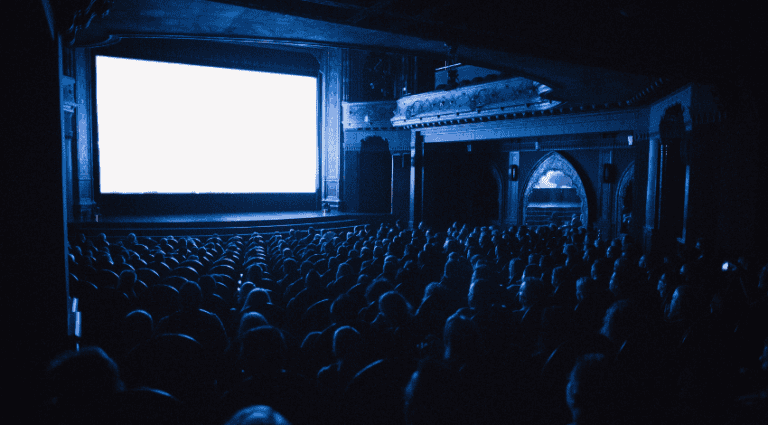In the digital age, social media influencers have become a major part of our lives. From fashion to fitness, these online personalities influence our choices, tastes, and even our lifestyles. But what happens when these influencers go wild? The term “influencers gone wild” refers to those moments when influencers step out of their usual roles, often leading to controversy and public outcry. This article explores the phenomenon of influencers gone wild, delving into the reasons behind their actions, the impact on their followers, and the broader implications for society.
Table of Contents
Introduction
Influencers have become the new celebrities, wielding significant power over their audiences. However, with great power comes great responsibility, and sometimes, influencers fail to uphold this responsibility. This article aims to explore the instances when influencers have gone wild, analyzing the causes and effects of their actions.
The Rise of Influencers
The rise of social media platforms like Instagram, YouTube, and TikTok has given birth to a new breed of celebrities – the influencers. These individuals amass large followings by sharing content that resonates with their audience. But what sets them apart from traditional celebrities?
Influencers often come across as more relatable and accessible. They share their everyday lives, engage with their followers directly, and create content that feels personal. This connection fosters a sense of trust and loyalty among their audience, which brands eagerly tap into for marketing purposes.
What Does ‘Gone Wild’ Mean?
The term “gone wild” refers to influencers stepping outside the bounds of acceptable behavior. This can range from controversial statements and actions to outright illegal activities. When influencers go wild, it often leads to a public backlash, affecting their reputation and sometimes their careers.
Examples of Influencers Gone Wild
1. Logan Paul
One of the most infamous examples is Logan Paul. In 2017, Paul faced severe backlash after posting a video from Japan’s “Suicide Forest” showing a dead body. The video was deemed insensitive and disrespectful, leading to widespread condemnation.
2. PewDiePie
PewDiePie, one of the most popular YouTubers, faced criticism for making anti-Semitic jokes and using racial slurs in his videos. Despite his massive following, these incidents damaged his reputation and led to lost sponsorships.
3. Jake Paul
Logan Paul’s brother, Jake Paul, is no stranger to controversy either. From partying during the COVID-19 pandemic to allegations of criminal behavior, Jake has often found himself in hot water.
4. Tana Mongeau
Tana Mongeau has also had her share of wild moments, including organizing the disastrous TanaCon event. The event was poorly planned and executed, leading to chaos and disappointed fans.
5. James Charles
James Charles, a beauty influencer, faced multiple allegations of inappropriate behavior. These allegations caused a significant drop in his subscriber count and damaged his brand partnerships.
Why Do Influencers Go Wild?
Several factors can drive influencers to go wild:
**1. Pressure to Stay Relevant
The constant pressure to stay relevant and maintain a high level of engagement can push influencers to take risks. In a bid to generate buzz, they might resort to controversial or outrageous behavior.
**2. Lack of Accountability
Unlike traditional celebrities, influencers often operate without the oversight of managers or publicists. This lack of accountability can lead to poor decision-making.
**3. Desire for Attention
Some influencers crave attention and validation. Engaging in wild behavior can provide the attention they seek, even if it is negative.
**4. Monetary Incentives
Controversial actions can sometimes lead to increased views and engagement, translating to higher earnings. This monetary incentive can encourage risky behavior.
Impact on Followers
Influencers hold significant sway over their followers, particularly younger audiences. When influencers go wild, it can have several impacts on their followers:
**1. Disillusionment
Fans who looked up to these influencers may feel disillusioned and betrayed. This can lead to a loss of trust and loyalty.
**2. Imitation
Younger followers may imitate the wild behavior of their idols, leading to negative consequences in their own lives.
**3. Mental Health Effects
Constant exposure to controversy and negativity can impact the mental health of followers, leading to increased anxiety and stress.
Societal Implications
The actions of influencers can have broader societal implications. When influencers go wild, it can:
**1. Normalize Bad Behavior
High-profile influencers engaging in wild behavior can normalize such actions, leading to a more tolerant attitude towards misconduct.
**2. Undermine Credibility
The credibility of social media as a whole can be undermined when influential figures act irresponsibly. This can impact how people perceive information shared on these platforms.
**3. Influence Culture
Influencers play a role in shaping cultural norms and values. Wild behavior can shift cultural expectations and standards.
The Role of Social Media Platforms
Social media platforms play a crucial role in either enabling or curbing wild behavior among influencers. They can:
**1. Implement Stricter Policies
Platforms can enforce stricter guidelines and policies to prevent and penalize inappropriate behavior.
**2. Promote Positive Role Models
Highlighting and promoting influencers who exhibit positive behavior can help set better examples for users.
**3. Provide Support
Offering mental health resources and support for influencers can help them cope with the pressures of their role.
Crisis Management for Influencers
When influencers go wild, effective crisis management is essential to mitigate damage. Steps include:
**1. Acknowledging Mistakes
Publicly acknowledging mistakes and taking responsibility can help rebuild trust.
**2. Issuing Apologies
A sincere apology can go a long way in mending relationships with followers.
**3. Taking Corrective Action
Implementing changes to prevent future incidents can demonstrate a commitment to improvement.
How Brands React
Brands often collaborate with influencers for marketing purposes. When influencers go wild, brands must decide how to respond:
**1. Distancing Themselves
Brands may choose to distance themselves from controversial influencers to protect their reputation.
**2. Terminating Contracts
In severe cases, brands may terminate contracts and partnerships with influencers.
**3. Supporting Redemption
Some brands might choose to support influencers through their redemption journey, emphasizing growth and learning.
Legal Consequences
Wild behavior can sometimes lead to legal consequences for influencers. These can include:
**1. Lawsuits
Affected parties may file lawsuits against influencers for defamation, breach of contract, or other legal issues.
**2. Fines
Regulatory bodies can impose fines for illegal activities, such as false advertising or copyright infringement.
**3. Criminal Charges
In extreme cases, influencers may face criminal charges for their actions.
Can Influencers Redeem Themselves?
Redemption is possible for influencers who have gone wild, but it requires genuine effort. Steps to redemption include:
**1. Making Amends
Actively making amends with those affected by their actions is crucial.
**2. Consistent Positive Behavior
Consistently demonstrating positive behavior over time can help rebuild trust.
**3. Engaging in Philanthropy
Involvement in charitable activities can show a commitment to positive change.
Preventing Influencers from Going Wild
Preventing influencers from going wild involves a collective effort from platforms, brands, and the influencers themselves:
**1. Setting Clear Guidelines
Clear guidelines and policies can help influencers understand the boundaries of acceptable behavior.
**2. Providing Support Systems
Offering mental health support and resources can help influencers manage the pressures of their role.
**3. Promoting Ethical Behavior
Encouraging ethical behavior and positive role models can set better standards for the industry.
Conclusion
Influencers hold a unique position of power and influence in today’s society. When they go wild, the repercussions are felt far and wide. By understanding the reasons behind their actions and implementing measures to prevent such behavior, we can create a healthier and more responsible social media environment.
FAQs
1. Why do influencers go wild?
Influencers may go wild due to the pressure to stay relevant, lack of accountability, desire for attention, and monetary incentives.
2. How does wild behavior impact followers?
Wild behavior can lead to disillusionment, imitation of negative actions, and mental health effects among followers.
3. What can social media platforms do to prevent wild behavior?
Platforms can implement stricter policies, promote positive role models, and provide support for influencers.
4. Can influencers redeem themselves after going wild?
Yes, influencers can redeem themselves by making amends, demonstrating consistent positive behavior, and engaging in philanthropy.
5. What role do brands play when influencers go wild?
Brands can choose to distance themselves, terminate contracts, or support influencers through their redemption journey.
By exploring the phenomenon of influencers gone wild, we can better understand the dynamics at play and work towards fostering a more responsible and positive online community.












